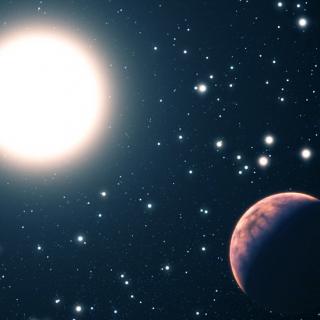Bibcode
Adibekyan, V. Zh.; González Hernández, J. I.; Delgado Mena, E.; Sousa, S. G.; Santos, N. C.; Israelian, G.; Figueira, P.; Bertran de Lis, S.
Referencia bibliográfica
Astronomy and Astrophysics, Volume 564, id.L15, 6 pp.
Fecha de publicación:
4
2014
Revista
Número de citas
92
Número de citas referidas
83
Descripción
We explore a sample of 148 solar-like stars to search for a possible
correlation between the slopes of the abundance trends versus
condensation temperature (known as the Tc slope) with stellar
parameters and Galactic orbital parameters in order to understand the
nature of the peculiar chemical signatures of these stars and the
possible connection with planet formation. We find that the
Tc slope significantly correlates (at more than 4σ)
with the stellar age and the stellar surface gravity. We also find
tentative evidence that the Tc slope correlates with the mean
galactocentric distance of the stars (Rmean), suggesting that
those stars that originated in the inner Galaxy have fewer refractory
elements relative to the volatiles. While the average Tc
slope for planet-hosting solar analogs is steeper than that of their
counterparts without planets, this difference probably reflects the
difference in their age and Rmean. We conclude that the age
and probably the Galactic birth place are determinant to establish the
star's chemical properties. Old stars (and stars with inner disk origin)
have a lower refractory-to-volatile ratio.
Based on observations collected with the HARPS spectrograph at the 3.6-m
telescope (072.C-0488(E)), installed at the La Silla Observatory, ESO
(Chile), with the UVES spectrograph at the 8-m Very Large Telescope
program IDs: 67.C-0206(A), 074.C-0134(A), 075.D-0453(A), installed at
the Cerro Paranal Observatory, ESO (Chile), and with the UES
spectrograph at the 4.2-m William Herschel Telescope, installed at the
Spanish Observatorio del Roque de los Muchachos of the Instituto de
Astrofísica de Canarias, on the island of La Palma.Appendix A is
available in electronic form at http://www.aanda.org
Proyectos relacionados

Pruebas Observacionales de los Procesos de Nucleosíntesis en el Universo
Recientemente se han llevado a cabo varios análisis espectroscópicos de estrellas con planetas. Uno de los resultados más relevantes ha sido descubrir que las estrellas con planetas son en promedio más metálicas que las estrellas del mismo tipo espectral sin planetas conocidos (Santos, Israelian & Mayor 2001, A&A, 373, 1019; 2004, A&A, 415, 1153)
Garik
Israelian